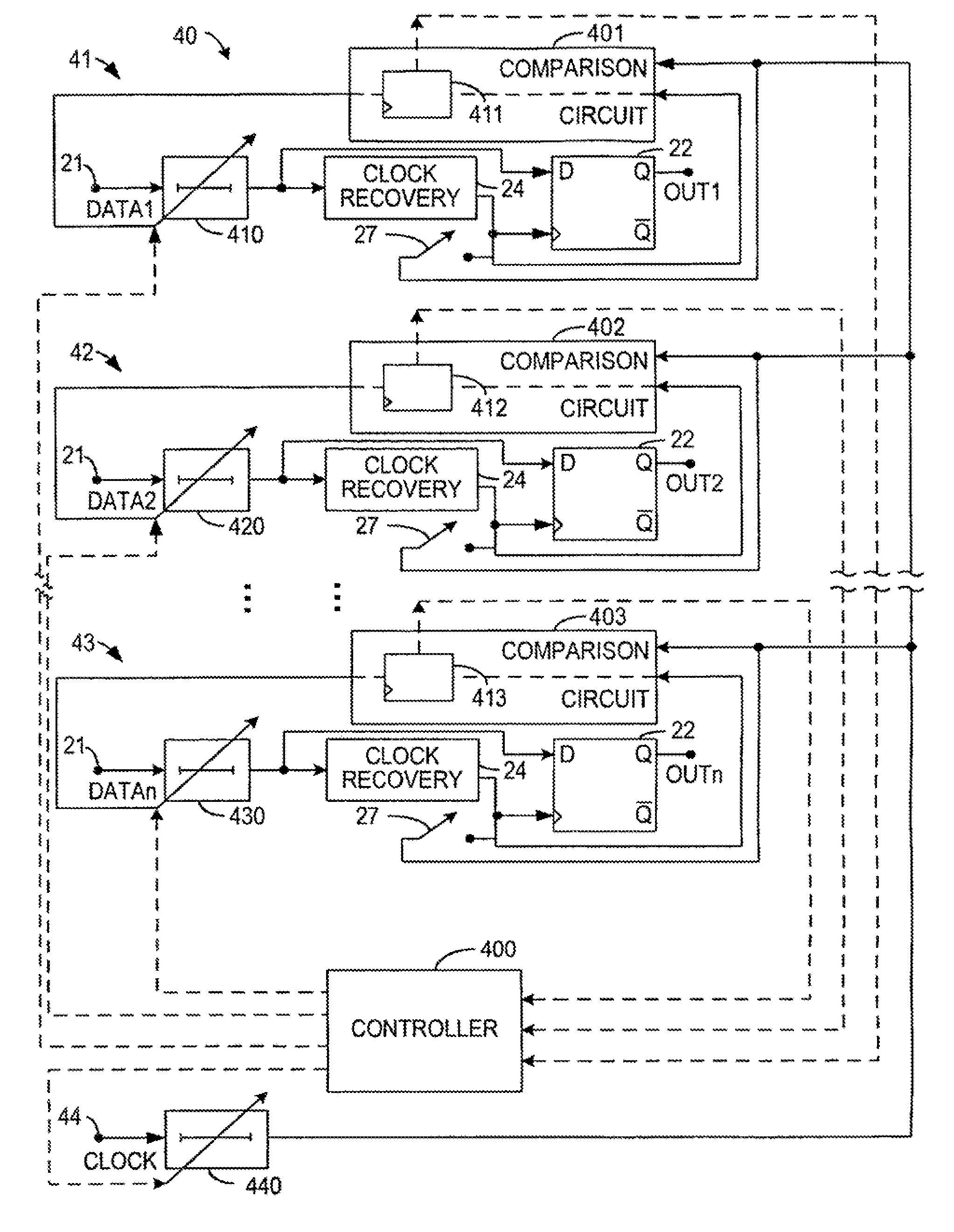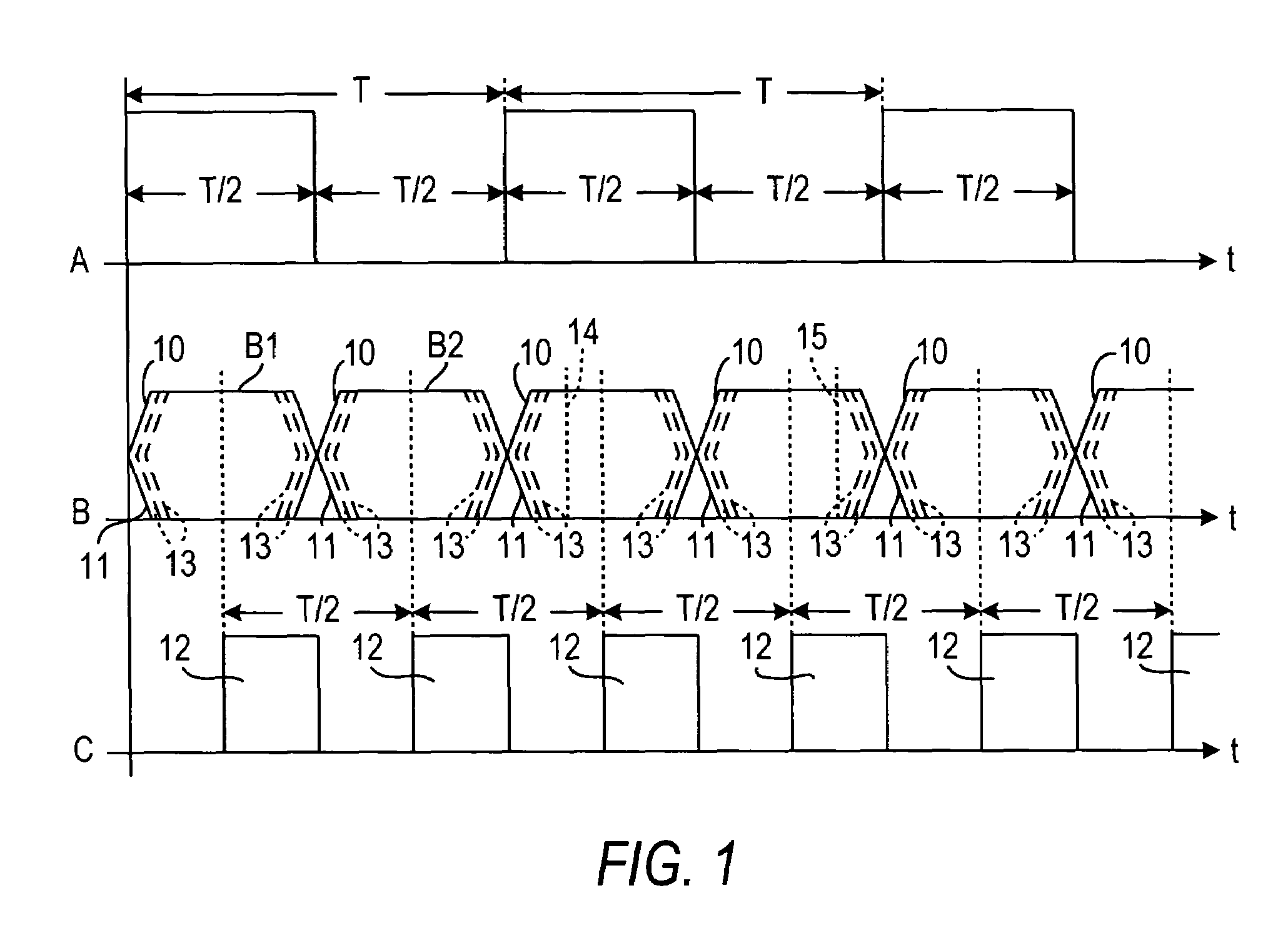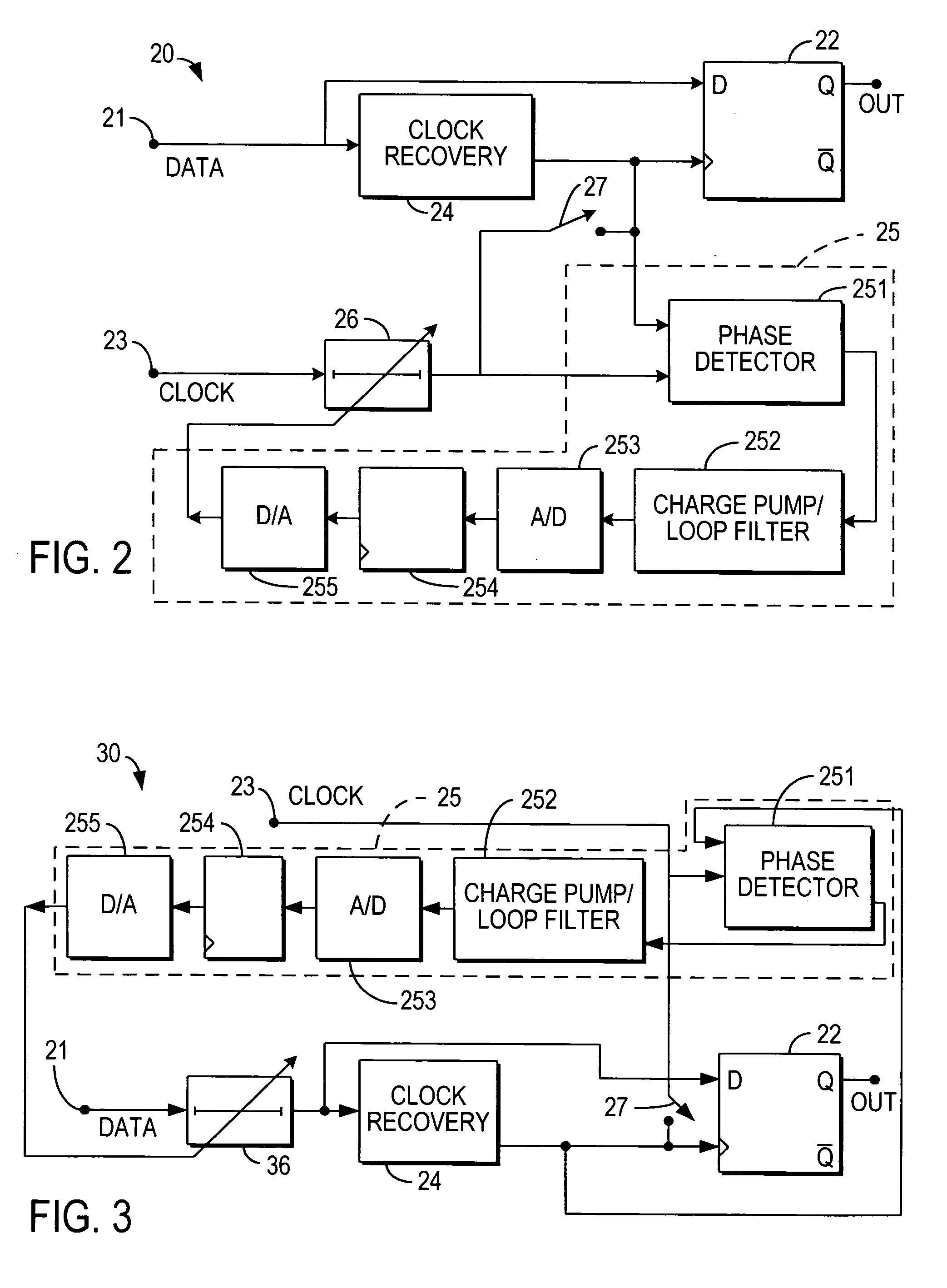Alignment of clock signal with data signal
a clock signal and data signal technology, applied in the direction of digital transmission, channel dividing arrangement, baseband system details, etc., can solve the problems of area and power consumption versus speed, and achieve reliable clock-data alignment, low power consumption, and reduced power consumption
- Summary
- Abstract
- Description
- Claims
- Application Information
AI Technical Summary
Benefits of technology
Problems solved by technology
Method used
Image
Examples
second embodiment
[0026]In a second embodiment, the received clock branches to each data path (as it would be expected to do in any embodiment), and the variable delay lines are present in the individual clock branches, so that the received clock can be delayed by different amounts for each data path. In a variant of this embodiment, delays are also present in the data paths, so that if the received clock lags any data signal, that signal can be delayed, rather than further delaying the received clock by the complementary phase amount.
[0027]Regardless of which of the foregoing embodiments, and the respective variants thereof, is used, there also are two different embodiments with respect to the comparison circuitry that compares the recovered clock for each data signal with the received clock to determine the respective delay value for that data signal or its clock input. In one embodiment, a comparison circuit is provided for each data receiving circuit. This allows all of the delays to be determine...
first embodiment
[0031]FIG. 2 shows a data receiving circuit 20 incorporating the present invention. Circuit 20 includes a data input 21 and a decision circuit 22, which may be as simple as a D-type flip flop, to which data input 21 is connected and which is meant to be clocked either by a clock sent with the incoming data signal and received at clock input 23 (synchronous operation), or by a clock recovered from the incoming data themselves by clock recovery circuitry 24 (asynchronous operation).
[0032]In the training mode of synchronous operation, in accordance with the present invention, comparison circuit 25, which preferably is loop circuit similar to a phase-locked loop or delay-locked loop, and incorporating a phase detector 251 and a charge pump and loop filter 252, adjusts variable delay line 26. Optionally, analog-to-digital converter 253, register 254 and digital-to-analog converter 255 are provided so that the delay value of variable delay line 26 can be stored and used as described below...
embodiment 40
[0035]The multiple channel case (likely to be more common) is shown in FIGS. 4 and 5. In embodiment 40 shown in FIG. 4, each channel—i.e., each data receiving circuit 41-43—includes clock recovery circuitry 24, allowing use of that channel in an asynchronous system. A single received clock 44 is also available in a synchronous system. It should be noted that there may be more than one received clock, each associated with one or more received data channels. However, each group of one received clock and its associated data channels may be considered a single multiple channel receiver in accordance with this invention.
[0036]For use in a synchronous system, each data receiving circuit 41-43 has a respective variable delay line 410, 420, 430 on its input. Each of those variable delay lines is controlled by, and part of, a comparison circuit 401, 402, 403, each similar to comparison circuit 25 of FIGS. 2 and 3, that compares the received clock to the recovered clock and delays the respect...
PUM
 Login to View More
Login to View More Abstract
Description
Claims
Application Information
 Login to View More
Login to View More - R&D
- Intellectual Property
- Life Sciences
- Materials
- Tech Scout
- Unparalleled Data Quality
- Higher Quality Content
- 60% Fewer Hallucinations
Browse by: Latest US Patents, China's latest patents, Technical Efficacy Thesaurus, Application Domain, Technology Topic, Popular Technical Reports.
© 2025 PatSnap. All rights reserved.Legal|Privacy policy|Modern Slavery Act Transparency Statement|Sitemap|About US| Contact US: help@patsnap.com



